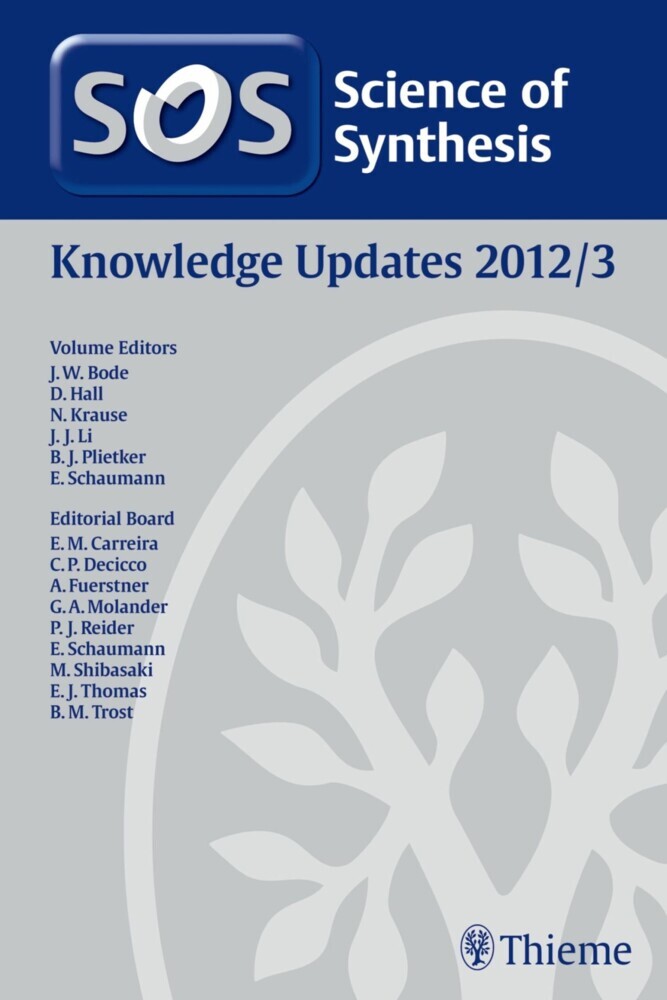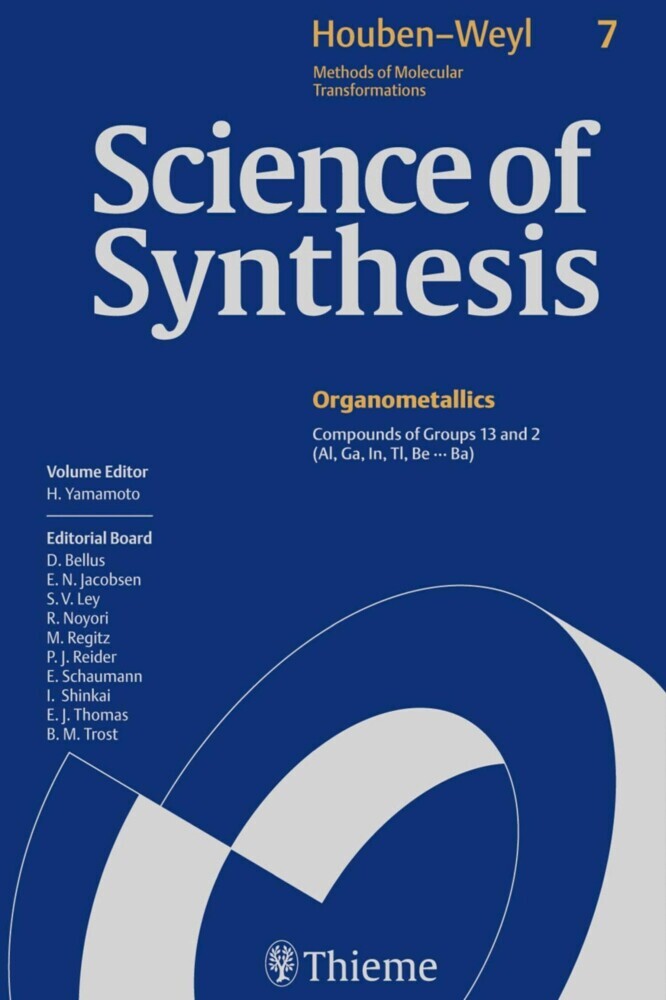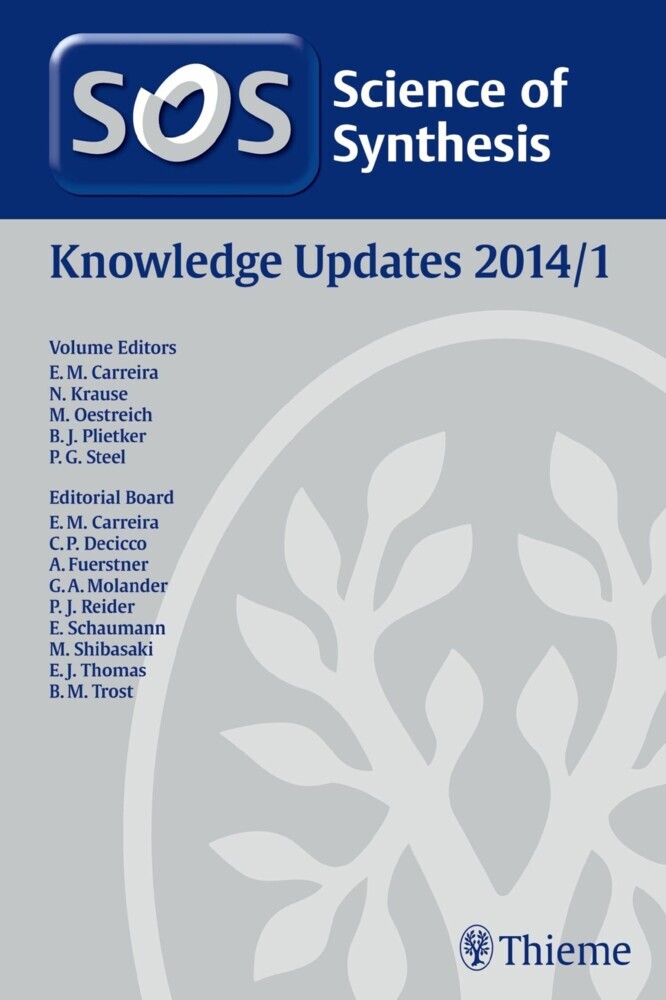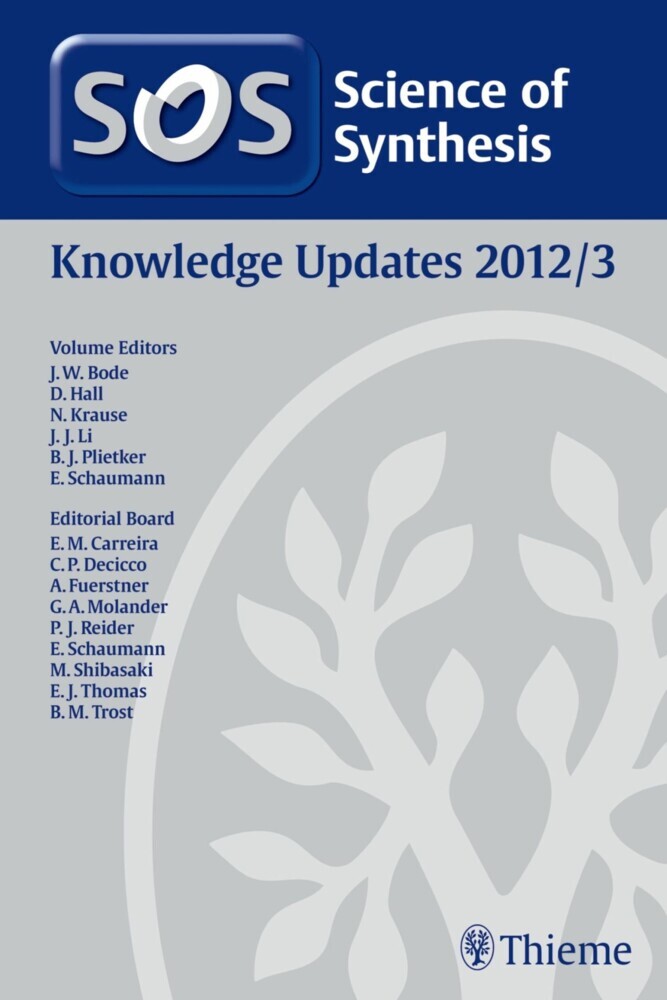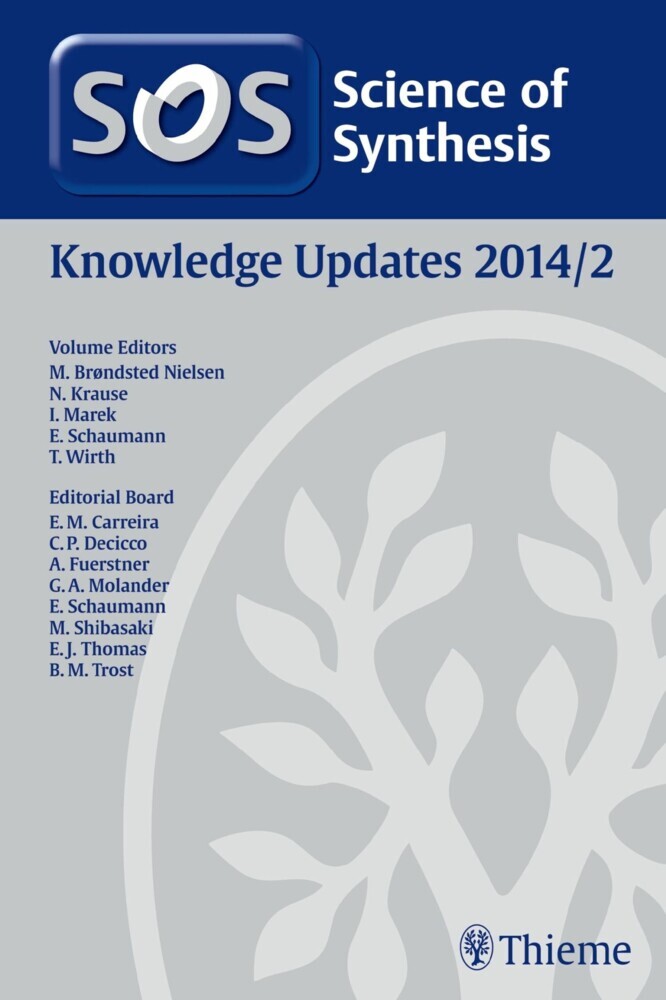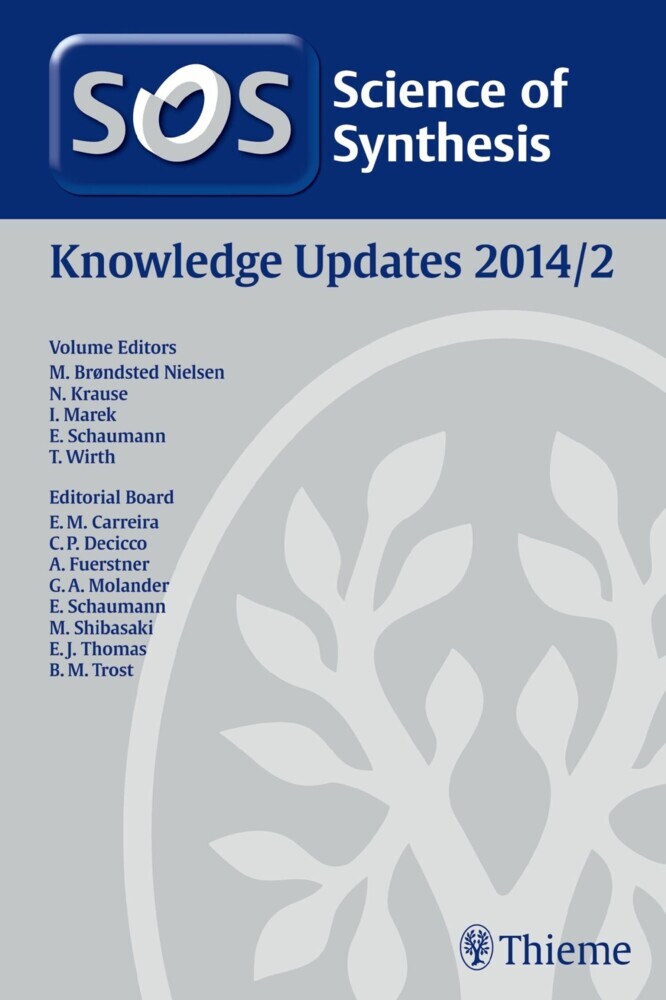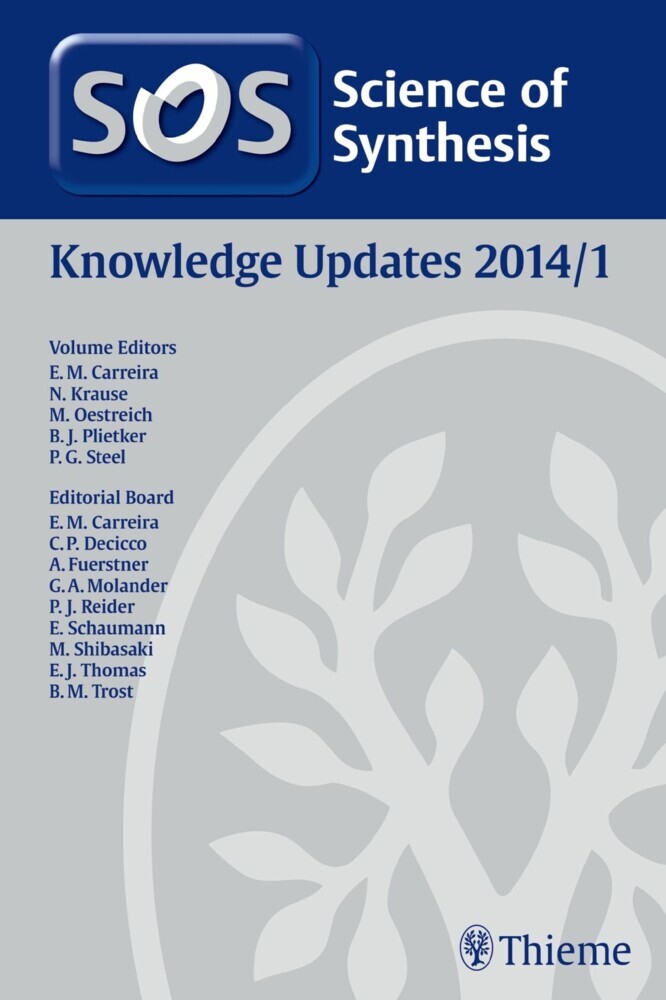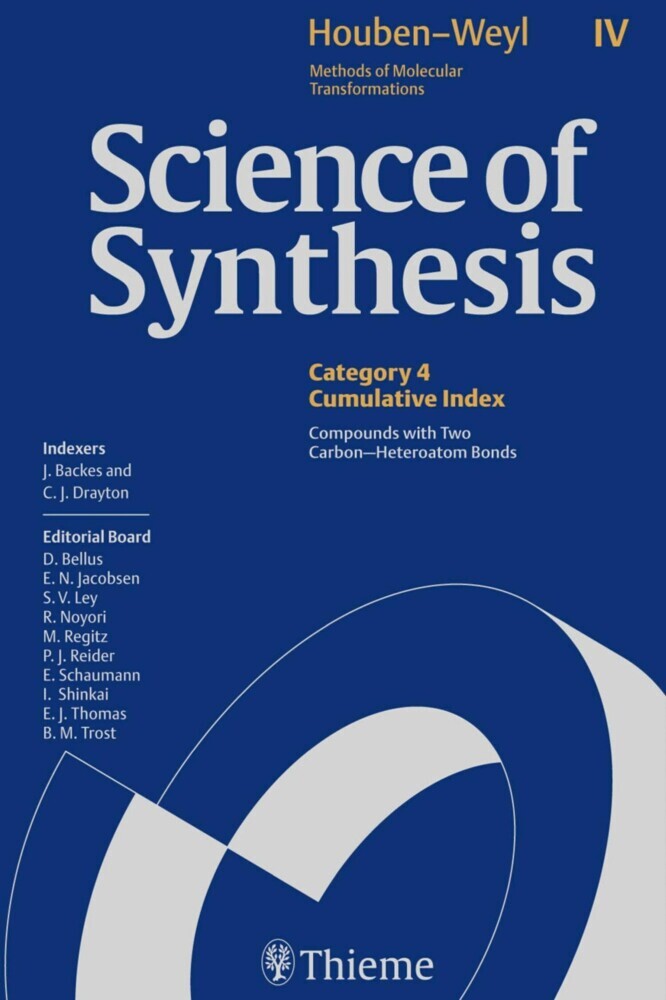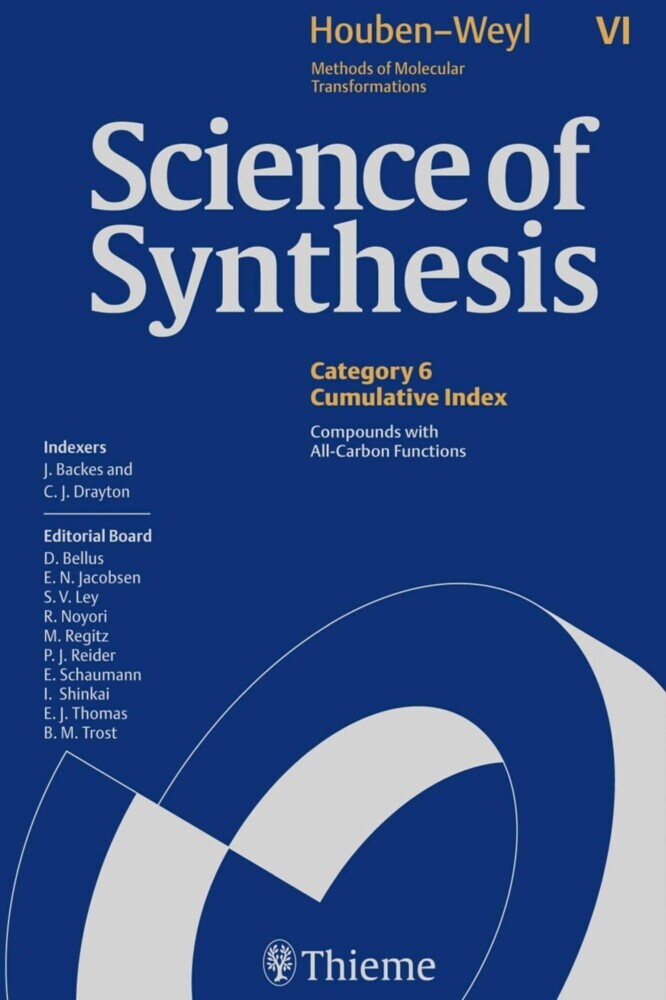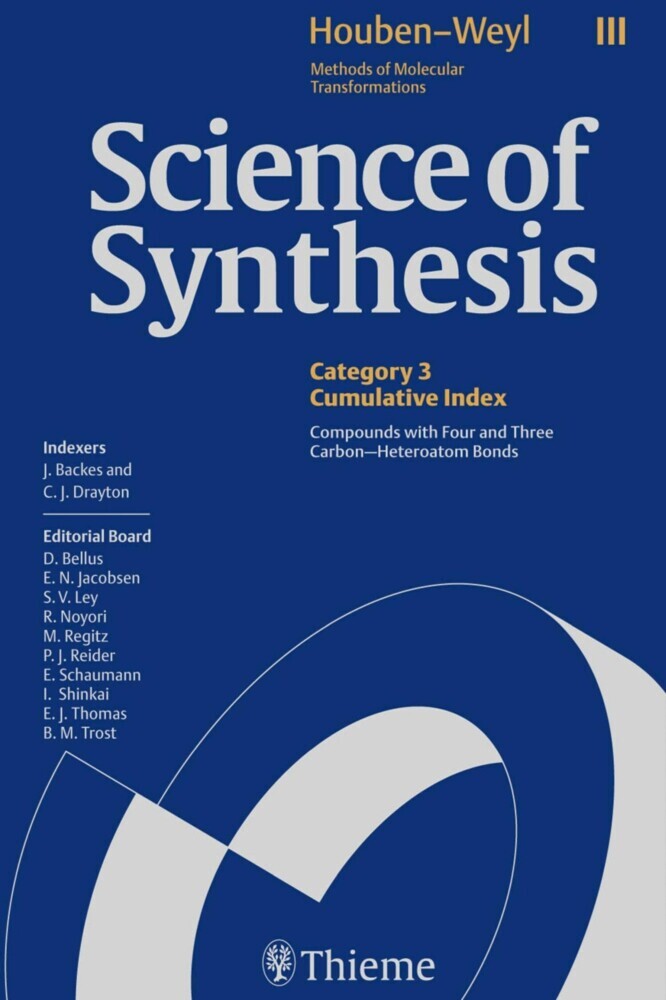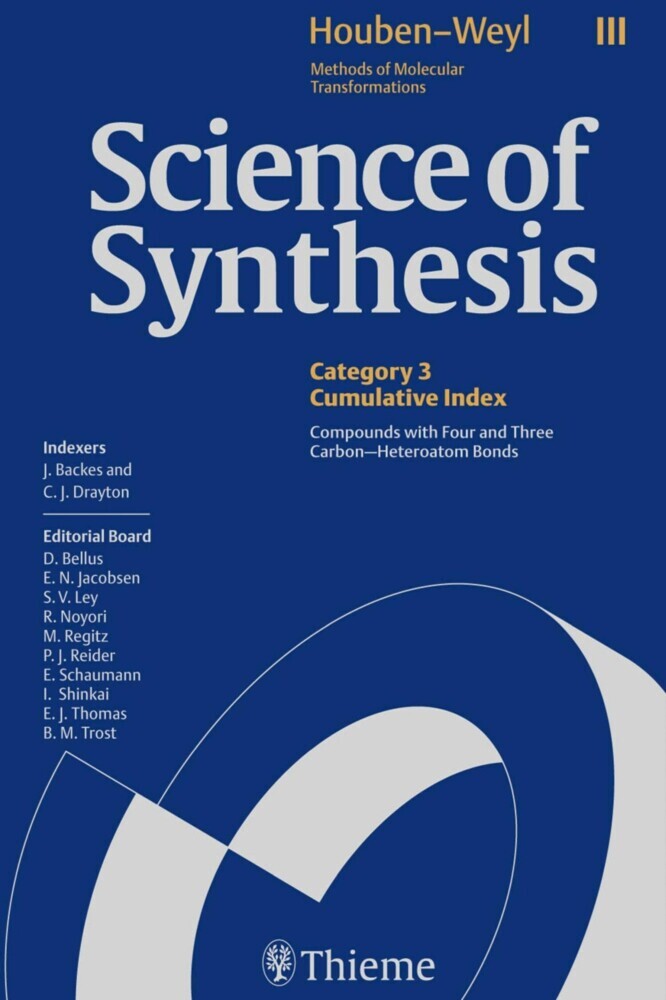Science of Synthesis Knowledge Updates 2012 Vol. 3
Science of Synthesis is a reference work for preparative methods in synthetic chemistry. Its product-based classification system enables chemists to easily find solutions to their synthetic problems.
Key Features:
- Critical selection of reliable synthetic methods, saving the researcher the time required to find procedures in the primary literature.
- Expertise provided by leading chemists.
- Detailed experimental procedures.
- The information is highly organized in a logical format to allow easy access to the relevant information.
The Science of Synthesis Editorial Board, together with the volume editors and authors, is constantly reviewing the whole field of synthetic organic chemistry as presented in Science of Synthesis and evaluating significant developments in synthetic methodology. Four annual volumes updating content across all categories ensure that you always have access to state-of-the-art synthetic methodology.
1;Science of Synthesis: Knowledge Updates 2012/3;11.1;Title page;51.2;Imprint;71.3;Preface;81.4;Abstracts;101.5;Overview;181.6;Table of Contents;201.7;Volume 1: Compounds with Transition Metal--Carbon p-Bonds and Compounds of Groups 10-8 (Ni, Pd, Pt, Co, Rh, Ir, Fe, Ru, Os);361.7.1;1.4 Product Class 4: Organometallic Complexes of Cobalt;361.7.1.1;1.4.5 Organometallic Complexes of Cobalt;361.7.1.1.1;1.4.5.1 Cobalt-.5-Dienyl Complexes;361.7.1.1.1.1;1.4.5.1.1 Synthesis of Cobalt-.5-Dienyl Complexes;361.7.1.1.1.1.1;1.4.5.1.1.1 Method 1: Synthesis of Chiral Dicarbonyl(.5-cyclopentadienyl)cobalt(I) and (.5-Cyclopentadienyl)(.4-diene)cobalt(I) Complexes;361.7.1.1.1.1.1.1;1.4.5.1.1.1.1 Variation 1: Synthesis of Chiral Dicarbonyl(.5-cyclopentadienyl)cobalt(I) Complexes by Oxidative Addition;371.7.1.1.1.1.1.2;1.4.5.1.1.1.2 Variation 2: Synthesis of Chiral (.5-Cyclopentadienyl)(.4-diene)cobalt(I) Complexes by Substitution of Ligands;371.7.1.1.1.1.2;1.4.5.1.1.2 Method 2: Synthesis of (Alkene)carbonyl(.5-cyclopentadienyl)cobalt(I) Complexes via Displacement of One Carbonyl Moiety;391.7.1.1.1.1.3;1.4.5.1.1.3 Method 3: Synthesis of (.5-Cyclopentadienyl)(.4-diene)cobalt(I) Complexes via Substitution of Ligands;401.7.1.1.1.1.4;1.4.5.1.1.4 Method 4: Synthesis of (.5-Cyclopentadienyl)cobalt-N-Heterocyclic Carbene Complexes by Exchange of Ligands;401.7.1.1.1.1.4.1;1.4.5.1.1.4.1 Variation 1: Synthesis of Carbonyl(.5-cyclopentadienyl)cobalt-N-Heterocyclic Carbene Complexes;411.7.1.1.1.1.4.2;1.4.5.1.1.4.2 Variation 2: Synthesis of (.5-Cyclopentadienyl)(ethene)cobalt-N-Heterocyclic Carbene Complexes;421.7.1.1.1.1.4.3;1.4.5.1.1.4.3 Variation 3: Synthesis of (.5-Cyclopentadienyl)(triphenylphosphine)cobalt-N-Heterocyclic Carbene Complexes;421.7.1.1.1.1.5;1.4.5.1.1.5 Method 5: Synthesis of (.5-Cyclopentadienyl)(phosphine)cobalt(I)-Ligand Complexes;431.7.1.1.1.1.5.1;1.4.5.1.1.5.1 Variation 1: Synthesis of Carbonyl(.5-cyclopentadienyl)(triphenylphosphine)cobalt(I);431.7.1.1.1.1.5.2;1.4.5.1.1.5.2 Variation 2: Synthesis of (.5-Cyclopentadienyl)(triphenylphosphine)cobalt(I)-Alkene Complexes;431.7.1.1.1.1.5.3;1.4.5.1.1.5.3 Variation 3: Synthesis of {[2-(Di-tert-butylphosphino)ethyl]cyclopentadienyl}(ethene)cobalt(I);441.7.1.1.1.1.6;1.4.5.1.1.6 Method 6: Synthesis of (.5-Cyclopentadienyl)cobalt-Dinitrosoalkane Complexes;451.7.1.1.1.1.7;1.4.5.1.1.7 Method 7: Synthesis of (.5-Pentamethylcyclopentadienyl)cobalt-.3-Allyl Complexes by Exchange of Ligands;461.7.1.1.1.1.8;1.4.5.1.1.8 Method 8: Synthesis of (.5-Cyclopentadienyl)cobalt-.5-Pentadienyl Complexes by Exchange of Ligands;481.7.1.1.1.1.9;1.4.5.1.1.9 Method 9: Synthesis of (.5-Cyclopentadienyl)cobalt-Alkyne Complexes;501.7.1.1.1.1.10;1.4.5.1.1.10 Method 10: Synthesis of (.5-Cyclopentadienyl)cobaltacycles;511.7.1.1.1.1.10.1;1.4.5.1.1.10.1 Variation 1: Synthesis of (.5-Cyclopentadienyl)cobaltacyclobutenes;511.7.1.1.1.1.10.2;1.4.5.1.1.10.2 Variation 2: Synthesis of (.5-Cyclopentadienyl)cobaltasilacyclopentenes;511.7.1.1.1.2;1.4.5.1.2 Applications of Cobalt-.5-Dienyl Complexes in Organic Synthesis;521.7.1.1.1.2.1;1.4.5.1.2.1 Method 1: Inter- and Intramolecular [2 + 2 + 2] Cyclizations;521.7.1.1.1.2.1.1;1.4.5.1.2.1.1 Variation 1: Inter- and Intramolecular [2 + 2 + 2] Cyclizations of Triynes in Aromatic and Aqueous Solvents;521.7.1.1.1.2.1.2;1.4.5.1.2.1.2 Variation 2: Intermolecular [2 + 2 + 2] Cyclizations of Diynes and Nitriles: Preparation of Pyridines;591.7.1.1.1.2.1.3;1.4.5.1.2.1.3 Variation 3: Intermolecular [2 + 2 + 2] Cyclizations of Enediynes and Allenediynes;631.7.1.1.1.2.1.4;1.4.5.1.2.1.4 Variation 4: Inter- and Intramolecular [2 + 2 + 2] Cyclizations of Diynes with Heteroatom-Substituted Multiple Bonds;671.7.1.1.1.2.2;1.4.5.1.2.2 Method 2: Other Cyclizations;671.7.1.1.1.2.2.1;1.4.5.1.2.2.1 Variation 1: [2 + 2] Cycloaddition;681.7.1.1.1.2.2.2;1.4.5.1.2.2.2 Variation 2: [3 + 2] Annulation;691.7.1.1.1.2.2.3;1.4.5.1.2.2.3 Variation 3:
Amatore, Muriel
W. Bode, Jeffrey
| ISBN | 9783131788412 |
|---|---|
| Artikelnummer | 9783131788412 |
| Medientyp | E-Book - PDF |
| Copyrightjahr | 2014 |
| Verlag | Georg Thieme Verlag KG |
| Umfang | 597 Seiten |
| Sprache | Englisch |
| Kopierschutz | Digitales Wasserzeichen |

